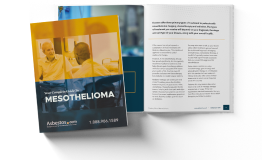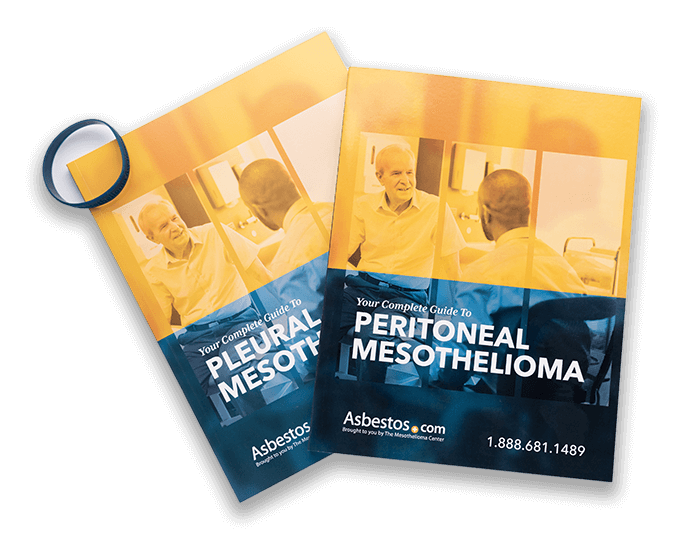Asbestos in New York
Asbestos exposure in New York gained attention in the aftermath of the 9/11 attacks because 400 tons of the toxic mineral was among the pulverized dust and debris of the Twin Towers. However, the state of New York had severe asbestos issues long before 9/11.

Written by Matt Mauney | Scientifically Reviewed By Arti Shukla, Ph.D. | Edited By Walter Pacheco | Last Update: July 17, 2024
Asbestos Exposure in New York
In many ways, the history of New York neatly encapsulates the whole story of asbestos’s rise and fall as a “magic mineral.”
The H.W. Johns Manufacturing Company, founded in New York City in 1958, was one of the first companies to use asbestos to manufacture fire-resistant construction materials and insulation products, giving rise to a highly profitable industry.
During World War II, the shipyards of New York used asbestos by the ton to insulate and fireproof U.S. Navy ships. During America’s postwar economic boom, factories all over the state kept demand for the toxic mineral high — as long as corporate executives were able to cover up the terrible health consequences of asbestos exposure.
The man most credited for breaking through the cover-up is Dr. Irving Selikoff, who published his findings on asbestos-related diseases while working at New York’s Mount Sinai Medical Center beginning in the 1960s.
Selikoff’s research led to national safety regulations as well as a deluge of personal injury and wrongful death lawsuits against asbestos industry companies.
Johns Manville, the successor of the H.W. Johns Manufacturing Company, created the nation’s first asbestos settlement trust in 1988 in order to save itself from bankruptcy, setting a precedent many liable companies in New York have followed.
At-Risk Occupations in New York
Most New Yorkers who have mesothelioma or other asbestos-related diseases were exposed to asbestos while on the job. Workers at shipyards, power plants and other types of heavy industry carry some of the highest risks, though occupational asbestos exposure is also a major problem for construction tradesmen, veterans and emergency first responders.
Factories
Manufacturers used asbestos in a variety of building materials, from roof shingles and floor tiles to the sealants and adhesives that held them in place. Paper mills used sheets of asbestos felt as drying surfaces. Workers at vermiculite-processing plants also suffered exposure when asbestos-contaminated ore was sourced from Libby, Montana.
Infrastructure
Asbestos products endangered pipe fitters and insulation workers at job sites large and small. Grand Central Station is one high-profile site that was once notoriously rife with crumbling asbestos insulation, but asbestos exposure could just as easily occur in any humble building’s basement or attic.
For example, in January 2022, a federal audit of the vacant Commodore Perry Homes in Buffalo, New York, found the property is contaminated with asbestos and poses an exposure risk to trespassers and those who live nearby. The property consists of 25 buildings that span seven blocks.
Power Plants
Many of America’s first powerhouses were built in New York by the Edison General Electric Company, known today as General Electric. For decades, the electricity industry relied on asbestos-containing insulation just as much as the steam-driven industry before it had.
Shipyards
The extensive use of asbestos fireproofing on ships seemed ideal during the mid-20th century, but unfortunately shipbuilders working at sites such as the Todd Shipyards were merely replacing one hazard with another. The use of asbestos at the Brooklyn Navy Yard endangered civilians and service members alike, contributing to the increased rate of mesothelioma among U.S. veterans.
Rescue Workers
When a building burns or collapses, asbestos materials can break down into a highly friable state, leading to the most severe levels of contamination. In many cases, firefighters and other first responders have inhaled asbestos while searching through the wreckage of an old structure.
New York Job Sites with Confirmed Asbestos Exposure:
Albany
- Albany Felt Company
Buchanan
- Indian Point Energy Center
Buffalo
- American Standard (Ingersoll Rand)
- Bethlehem Steel
- Dunlop Tire and Rubber (Sumitomo Rubber)
- General Motors
- Spaulding Fibre
Corning
- Corning Glass
- Dresser-Rand
Endicott
- IBM
Glen Falls
- Finch, Pruyn and Company
Glenmont
- Niagara Mohawk Power Corporation
Massena
- Alcoa Aluminum
Buffalo
- Astoria Powerhouse
- Bethlehem Shipbuilding Corporation
- Brooklyn Navy Yard
- Brooklyn Union Gas Company
- Caddell Dry Dock & Repair Co.
- Charles Poletti Power Project
- Consolidated Edison Company
- GMD Shipyard Corporation
- Kentile Floors
- Todd Shipyards Corporation
Niagra Falls
- Carborundum Company
- Niacet Corporation
- Niagara Electrochemical Company
- Occidental Chemical Corporation
- Union Carbide Company
Olean
- American Cyanamid Company
- Dresser-Rand
- Palmyra
- Garlock Sealing Technologies
Plattsburgh
- Georgia Pacific Corporation
- Plattsburgh Air Force Base
- Vanity Fair Paper Mills, Inc.
Rochester
- Bausch & Lomb, Inc.
- Eastman Kodak Company
- Xerox Corporation
Rome
- Revere Copper Products, Inc.
Schenectady
- American Locomotive Company (ALCO)
- General Electric
- Schenectady Chemical
Troy
- Bendix Corporation (Honeywell)
Watertown
- Fort Drum Army Base
- Knowlton Specialty Papers, Inc.
Weedsport
- Zonolite Company/W.R. Grace
Asbestos and 9/11
Following the destruction of the World Trade Center towers, government agencies underestimated the danger caused by the dust cloud that fell over several blocks of Manhattan. As a result, local residents and volunteer rescue workers from across the nation were not adequately warned about the asbestos, heavy metals and other toxins contaminating the dust and debris of the Twin Towers.
In the years since the 9/11 attacks, hundreds of thousands of people exposed to the debris of the Twin Towers have developed health problems such as the “World Trade Center cough” and a variety of cancers, including mesothelioma.
In 2012, mesothelioma was one of the dozens of types of cancer added to the list of conditions covered by the WTC Health Program. In 2015, Congress passed a bill reauthorizing this program for 75 years, in recognition of the long latency period of many diseases caused by toxic exposure.
New York Asbestos Laws
The New York State Asbestos Law, also known as Industrial Code Rule 56, mandates stricter protections for residents and workers than federal asbestos regulations. The state Department of Labor enforces this law, requiring all work that disturbs asbestos to be done by trained workers following proper abatement and containment procedures. The penalties for noncompliance are costly.
In 2012, for example, the Occupational Safety and Health Administration (OSHA) cited the Nassau Veterans Memorial Coliseum in Long Island for failing to protect maintenance workers and electricians from asbestos exposure.
OSHA proposed fines of $88,000, and the following year, more than 100 plaintiffs filed a class-action lawsuit against the coliseum’s management, seeking $1 billion in compensation.
Cancer Support Resources in New York
Cancer patients in New York can turn to several organizations for support. Support groups and temporary housing are available through Gilda’s Club (an affiliate of the Cancer Support Community) and Joe’s House. The New York Cancer Foundation and CancerCare Co-Payment Assistance offer financial resources for patients in treatment. The American Cancer Society and American Lung Association also organize local programs and events.
This Page Contains 11 Cited Articles
The sources on all content featured in The Mesothelioma Center at Asbestos.com include medical and scientific studies, peer-reviewed studies and other research documents from reputable organizations.
- Zremski, J. (2022, January 13). Flooded stairwells, lead, asbestos at deteriorating Perry projects, audit says. Retrieved from https://buffalonews.com/news/local/flooded-stairwells-lead-asbestos-at-deteriorating-perry-projects-audit-says/article_b5c93992-7484-11ec-abb0-2762036fc119.html
- Agency for Toxic Substances and Disease Registry. (2009). Fact Sheet: Weedsport, NY. http://www.atsdr.cdc.gov/asbestos/sites/national_map/fact_sheets/weedsportny.html
- Agency for Toxic Substances and Disease Registry. (2002). World Trade Center: Fact Sheet. http://www.atsdr.cdc.gov/asbestos/asbestos/types_of_exposure/fact_sheet.html#airresults
- Cook, G. and Robertson, T. (2001). Asbestos Dust Poses Threat to Rescue Crews. http://www.boston.com/
- Environmental Protection Agency, Region 2. (2008). EPA Response to September 11: Lower Manhattan Test and Clean Program. http://www.epa.gov/wtc/
- Hull, M.J., Abraham, J.L. and Case, B.W. (2002). Mesothelioma Among Workers in Asbestiform Fiber-bearing Talk Mines in New York State. http://www.upstate.edu/pathenvi/
- Shukman, D. (2011). Toxic Dust Legacy of 9/11 Plagues Thousands of People. http://www.bbc.co.uk/news/world-us-canada-14738140
- Van Gosen, B.S. (2006). Reported Historic Asbestos Mines, Historic Asbestos Prospects, and Natural Asbestos Occurrences in the Eastern United States. http://pubs.usgs.gov/of/2005/1189/
- Centers for Disease Control and Prevention, National Center for Health Statistics. (2011). Underlying Cause of Death 1999-2008 [Data file]. CDC WONDER Online Database. http://wonder.cdc.gov/ucd-icd10.html
- Centers for Disease Control and Prevention, National Center for Health Statistics. (2015, January). Underlying Cause of Death 1999-2013 on CDC WONDER Online Database. http://wonder.cdc.gov/ucd-icd10.html
- Carroll, S. et al. (2002). Asbestos Litigation Costs and Compensation: An Interim Report. RAND Institute for Civil Justice. http://bit.ly/1JphFXe








